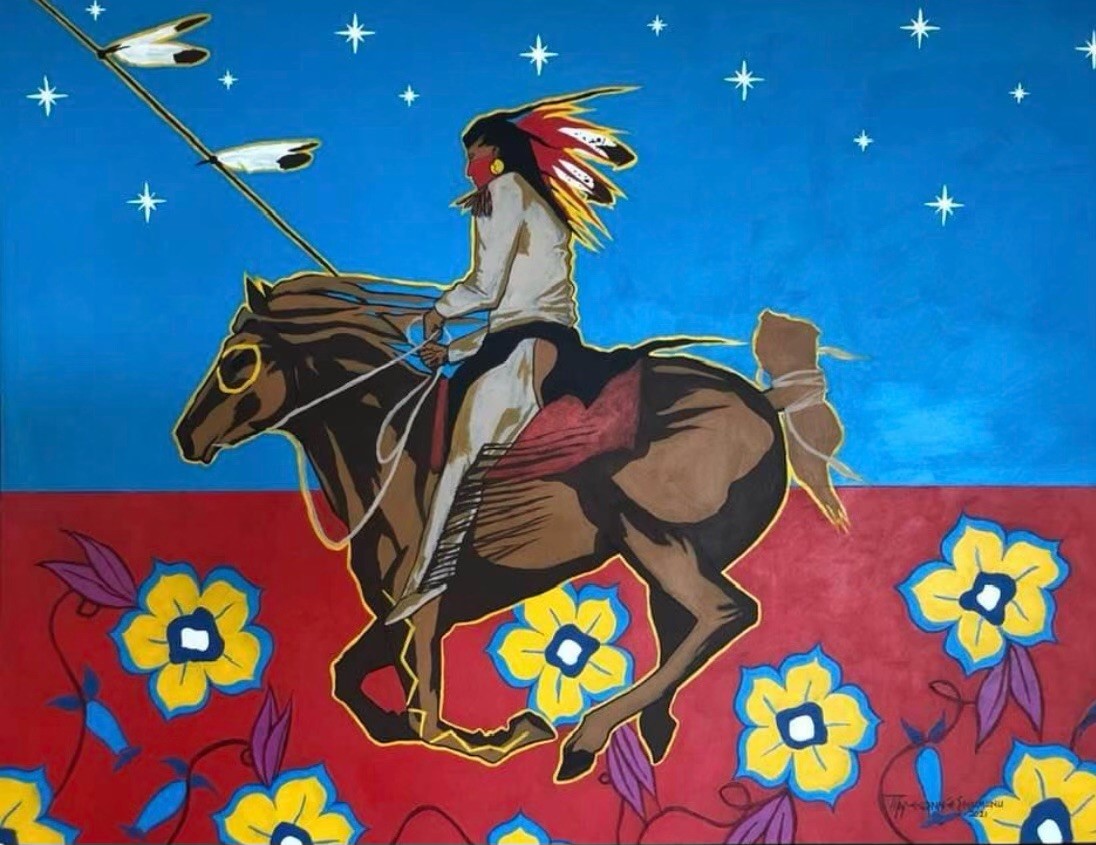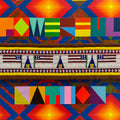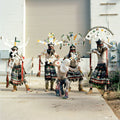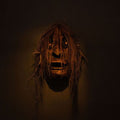How to make the most of a visit to Santa Fe Indian Market
By Medicine Man Gallery on
Santa Fe Indian Market
“It means everything.”
Ask Eric Tippeconnic what Santa Fe Indian Market means to him and his response is instantaneous.
Following a one-year interruption due to COVID-19 after 98 in a row on the Plaza in Santa Fe, the Southwestern Association for Indian Arts (SWAIA) Indian Market returns August 21 and 22 for its 99th in-person event. The Super Bowl of Indigenous art.
Tippeconnic, a Southern California painter, has been participating more often than not for almost 20 years.
“A Comanche artist like myself is going to have very different work than a Pueblo artist or a Chumash artist or a Penobscot artist – our work is completely different, the materials are different – it highlights for me how beautiful and diverse Native America is,” Tippeconnic explains about what most attracts him to Indian Market. “The very thing that makes us sovereign is our diversity and celebrating that diversity is good, that's what Indian Market does.”
Hundreds of Indigenous artists from across America will again be selling their paintings, pottery, jewelry, textiles, sculpture and more face-to-face with tens of thousands of visitors from around the world. Due to ongoing COVID-19 concerns, this year’s Indian Market capacity will be limited to 75% of the 2019 crowd. Timed general admission tickets for entry to Market are available for purchase at the SWAIA website.
The traditional schedule of events includes a Best in Show ceremony Friday night, August 20, Market Stage and dance performances Saturday and Sunday, a gala reception and silent auction Saturday, and the increasingly popular Indigenous Fashion Show Sunday.
The main event, of course, remains the individual artists’ booths set up throughout downtown Santa Fe where artist and collector have the opportunity to meet, share stories and learn. Tippeconnic says this should be taken advantage of, especially by newcomers to Indian Market.
“If you're a first timer and you want to take it all in, I would try to spend as much time as you can talking to people and engaging with them and trying to find out about why they're doing what they’re doing,” he said. “Is (the artwork) a reflection of their history? Is it a reflection of their cultural practices?”
By bringing people together in this way and encouraging dialogue, Indian Market spurs a connection many non-Native people may not experience at any other time.
“I guess it would depend on where you live, but the majority of Americans who are not Native never have to interact with Native people over the course of their whole lifetime if they choose not to,” Tippeconnic, who also works as a professor of history at California State University San Marcos in the American Indian Studies department, said. “The exact reverse is true for Native peoples; you're always having to interact with other groups of people.”
Think about that.
Eric Tippeconnic, 'Rhapsody in Red,' 36" x 48", c. 2019, courtesy of the artist
While Tippeconnic cautions that some artists will simply want to do business, he says visitors who take time making conversation with artists will come away from Indian Market with a great deal more than another piece of art.
“Native peoples are some of the most beautiful people in the world and their stories are fascinating and there's no better way to get an education than to just go up and talk to someone,” he said. “I’ve learned so much from people coming up and talking to me, ‘where are you from, what are you doing, how are you, what makes you tick?’ When we engage in these conversations, the distance between disparate groups shortens up and people learn that, ‘oh, these people laugh, they smile, they’re very engaging, they have stories just like me, they have history just like me. They're a lot like me.’”
Visitors will discover that the multiplicity of objects on display is reflected in the makers.
“If you look at us as a people – if you going to put Native people into one category – you're talking about 574 different federally recognized tribes, a few hundred more state recognized tribes and many other nations that are trying to get recognition still, so what Santa Fe Indian Market does is it really captures the diversity in Native America,” Tippeconnic said. “We're not all one people. We're not all one group. We're not all the same and I think when you go and you peruse all the different styles of art, and all the different types of art being produced, I think that diversity really comes out.”
This point of not treating Native people as a monolith, or pretending all Americans are the same simply because of the political borders which surround us – the “melting pot” myth of citizenship – is a particularly important one to Tippeconnic.
“It's not all about making one homogenous group of people in this country which is what the narrative likes to pursue – this is always being pushed on us and that's one of the biggest points of resistance for Native people – we're not homogenous, we're different, but as human beings, we want the same things,” he said. “We want a good life for our kids and our family and we want the ability to prosper. So I think that simple conversation really helps bridge a lot of gaps and it brings people closer.”
Tippeconnic’s large-scale paintings picture both contemporary and historic Native people in vibrant color. Motion distinguishes his work. His subjects ride, dance, play musical instruments.
“The motion for me is a metaphor for the fact that (Native people are) still here,” he explains. “Regardless of how horrible colonization and the history has been, we survived, and in many cases we're thriving.”
For collectors visiting Indian Market, Tippeconnic should be one of the first artists sought out for the conversations he encourages. In addition to his artwork and being a member of Colorado State’s All-Century football team, he became the Comanche Tribe’s first professionally trained historian when he earned his PhD in history from the University of New Mexico.
Eric Tippeconnic, 'Comanche Vanguard,' 36" x 48", c. 2021, courtesy of the artist






